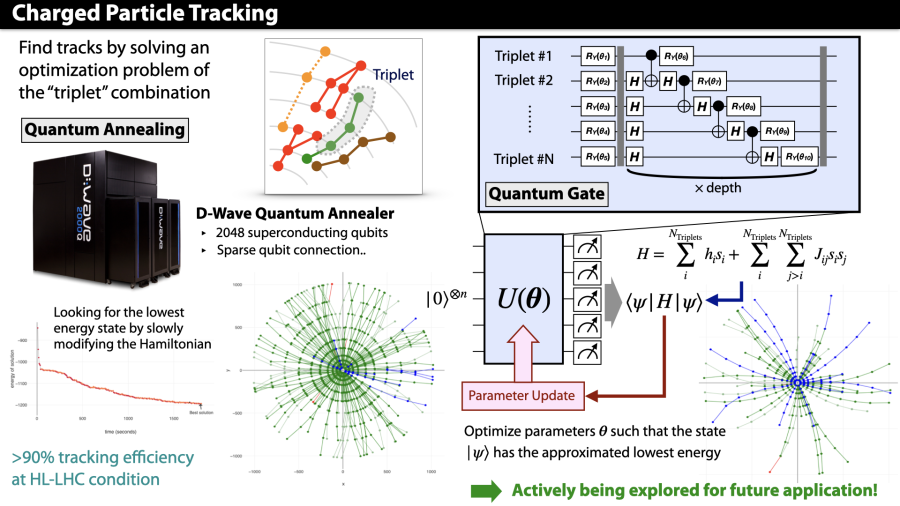Overview
This project aims to develop a QC application for pattern recognition of charged particles in HEP experiments, typically one of the most challenging and resource-demanding techniques in hadron collider experiments. The situation is expected to get significantly worse due to an explosive growth of combinatorial background in the High Luminosity-LHC, where the collision rate will be an order of magnitude higher than where we are now. In this project, we are collaborating with the HEP.QPR project at Lawrence Berkeley National Laboratory (LBNL).
Charged particle tracking is a problem to identify a series of detector hits originating from charged particles produced in high-energy collisions. In the HEP.QPR project, detector hits are arranged into segments of 3 consecutive detector layer hits, called triplets. The quantum pattern recognition algorithm formulates particle tracking as a quadratic unconstrained binary optimization (QUBO), where each triplet is assigned to a qubit and the coupling strength between qubits is defined based on the spatial distributions of the triplet pair with respect to a single charged particle trajectory. Correct combinations of triplets are then selected by minimizing the QUBO hamiltonian.
Research
We consider an alternative approach to solve the same problem by minimizing the hamiltonian using VQA, for example, a quantum-classical hybrid algorithm with Variational Quantum Eigensolver (VQE). This approach allows one to tackle the tracking using a gate-based quantum computer, though the limited number of qubits in the present gate-based NISQ machine will require further development.



 " alt="">
" alt="">